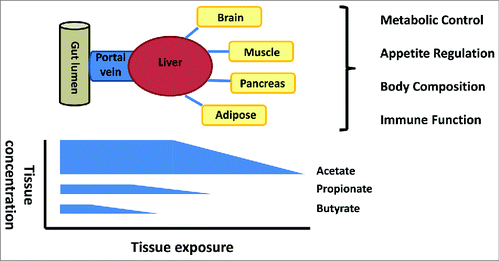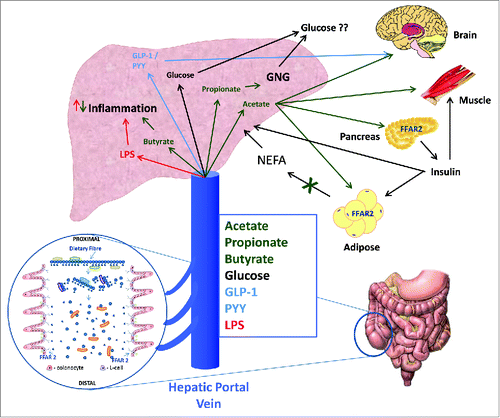Figures & data
Figure 1. The gut lumen is the major site of production but the concentration gradient falls from the lumen to the periphery with selective uptake of butyrate at the epithelium, propionate at the liver and acetate in the periphery. The significance for host physiology of this biological gradient is poorly understood.

Figure 2. SCFA along with other metabolites entering the hepatic portal system are rapidly transported to the liver. The role of molecular signaling on different liver cell types is poorly characterized. SCFA can act on resident macrophages and hepatocytes although there may be functional selectivity for each SCFA. Incretion hormones may also act on hepatocytes and peripheral tissues. The overall impact of this dual signaling system appears to be maintenance of a healthy liver through regulation of hepatic metabolism and inflammation and control of adipose derived FFA flux. The peripheral effects of SCFA appear tissue specific. SCFA can regulate insulin in the pancreas, FFA flux from adipocytes, appetite centers in the brain and provide a fuel for the muscle. This multi-faceted role however, requires further investigation with well-designed and controlled studies in humans.

